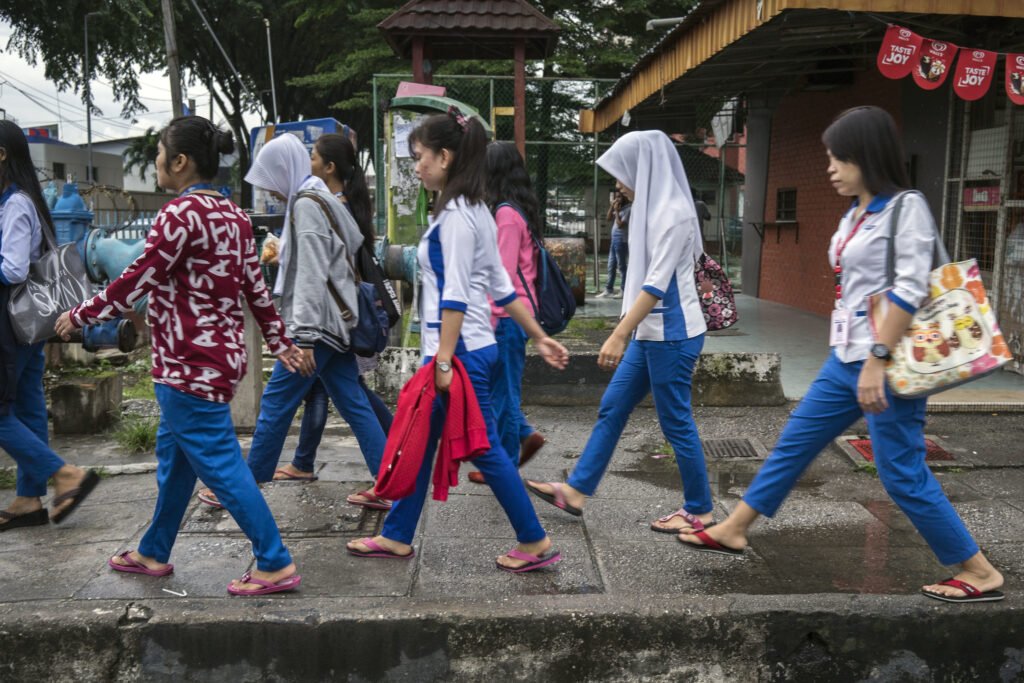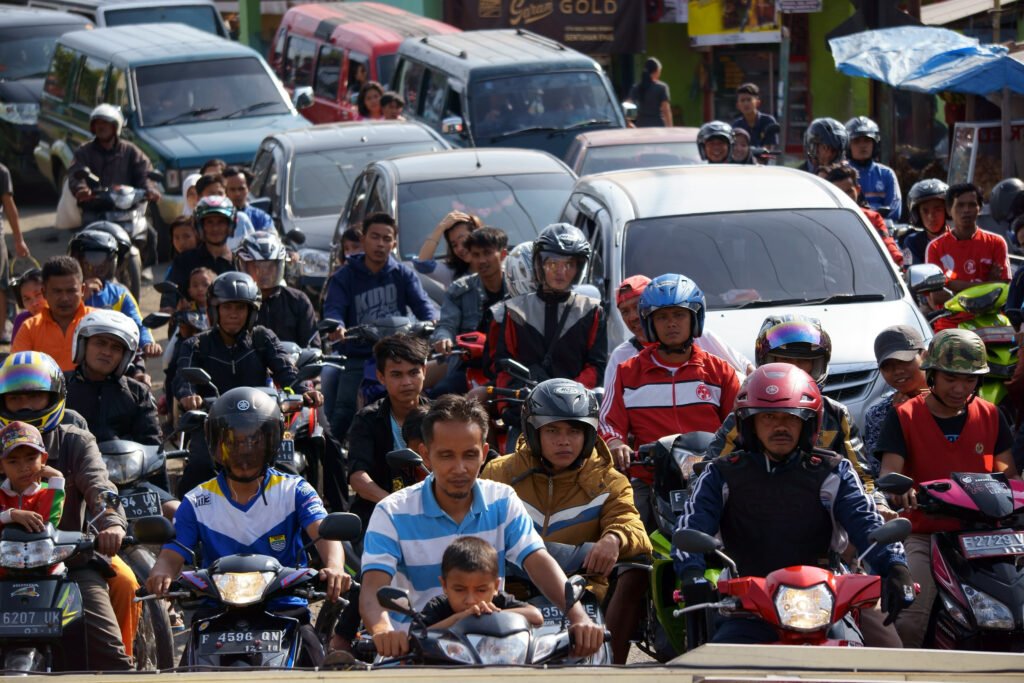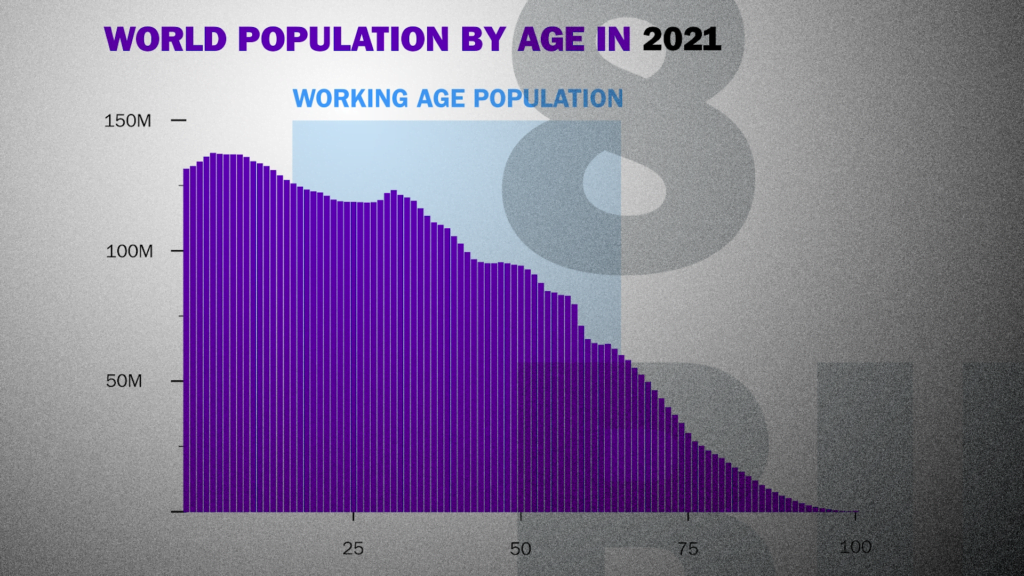A difficult road lies ahead for Indonesia. Faced with a rare opportunity to turbo-charge economic growth, it has major problems yet to solve.
 Indonesia’s population diversity makes for big differences in the economy across its provinces. : ‘Arabic Quarter – Surabaya’ by Axel Drainville is available at https://bit.ly/3EEBFup CC BY 2.0
Indonesia’s population diversity makes for big differences in the economy across its provinces. : ‘Arabic Quarter – Surabaya’ by Axel Drainville is available at https://bit.ly/3EEBFup CC BY 2.0
A difficult road lies ahead for Indonesia. Faced with a rare opportunity to turbo-charge economic growth, it has major problems yet to solve.
Indonesia, once an emerging manufacturing powerhouse, is facing an ‘early’ deindustrialisation according to Indonesian economist Ahmad Heri Firdaus.
Manufacturing made up 27.7 percent of economic activity in 2000 but as of the second quarter of 2020 it had fallen to 19.8 percent. This is just one of the many factors imperilling Indonesia’s shot at lifting its economy into the big league.
When the proportion of the population in their working years (15-65) is more than the dependent population (the old and the young), nations have an opportunity to turbo-charge their economies. Examples include increasing labour productivity, exploring economic potential to be a reality and increasing the nation’s competitiveness, those economies leapt up a notch, as the workers skilled up, earned more and spent their spare money.
The opportunity occurs rarely because as the cohort of working-age people get older the number and proportion of the elderly population increases, relative to dependents. If a nation is not quick to seize the opportunity, it will miss the chance, meaning the road to prosperity is longer, slower and harder.
Working-age Indonesians will reach their highest proportion in 2020-2030, opening opportunities for Indonesia to reap the so-called ‘demographic dividend’. But the moment to seize this chance is not the same across all provinces.
Since 2014, Indonesia has grouped its provinces based on the length of the demographic dividend opportunity: absent, short, or long. This grouping was intended to prove that changes in population structure and the incidence of demographic bonuses are not the same by province.
There are differences in fertility rates and population mobility. Those with high rates of out-migration, such as West Sumatra and East Nusa Tenggara, experienced a short period of demographic bonus. Provinces in Eastern Indonesia still have high fertility rates. Provinces that experience out-migration and high fertility rates will have a population structure of more unproductive age than productive ones.
The economic changes happening in the provinces with no wave of working-aged people cannot be attributed to the demographics. The provinces that only enjoy a short demographic dividend opportunity likewise are unlikely to be feeling the effects of the demography.
But provinces that experience a longer period of demographic dividend opportunity will progress further. This will cause an increase in development inequality between provinces in Indonesia if there is no government intervention.
Currently there are six provinces that will miss the opportunity for a demographic dividend. All of these are outside the island of Java. As long as the centres of economic activity or growth centres are concentrated on Java, the chance for the demographic dividend outside of Java is becomes lower and the opportunity shorter. Meanwhile, the opportunity for the provinces in Java becomes longer. This inequality of development is a central issue for realising the demographic dividend for Indonesia more widely.
Likewise, the opportunity for the demographic dividend will be missed if the productive age population has a low educational background. Their earnings will always remain modest and so they will not contribute significantly to the development and acceleration of economic growth. The average Indonesian aged 25 years and over has only obtained 8.54 years of schooling — the equivalent of graduating from junior high school around age 15.
In terms of health, Indonesia also faces serious problems. Working-age Indonesians cannot be productive if they are not healthy. More than one quarter of children under five years old are stunted though malnutrition, setting them up for a lifetime of health problems.
The unemployment rate is still high in several provinces. Nationally the unemployment rate has decreased and is less than 6 percent. But many people of productive age work fewer hours than they would prefer, meaning they are underemployed, with implications for economic development.
Indonesia is still overshadowed by threats of a water or energy crisis. If the government fails to manage these crises, Indonesia will miss the demographic dividend opportunity.
Realising the demographic dividend is also influenced by the economic structure of a country. It can be led by a high value industrial sector, but in Indonesia deindustrialisation is taking place. The manufacturing sector, which has high productivity, is declining in the contribution to gross domestic product. Value-adding products is not yet well developed, so Indonesia's exports are dominated by primary commodities and semi-finished goods.
The obstacles to taking advantage of the demographic window of opportunity that opened in 2012 in Indonesia are getting bigger. Unless there is change in the concentration of economic centres outside Java and family planning programs in the eastern part of Indonesia, Indonesia will remain trapped as a middle-income economy.
Werry Darta Taifur is a professor of economics in University of Andalas, Padang Indonesia. He was the rector from 2011-2015. His research interests are in poverty, local finance and development planning. He declared that he has no conflict of interest and is not receiving specific funding in any form.
Originally published under Creative Commons by 360info™.












